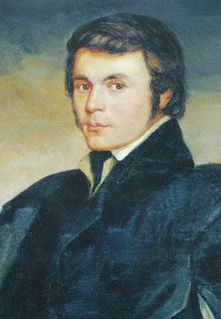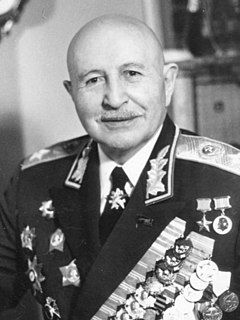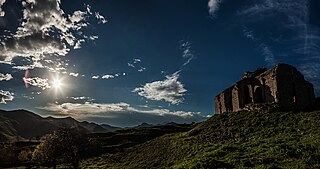| Yearning | |
|---|---|
| Directed by | Frunze Dovlatyan |
| Based on | Hrachya Kochar's novel Nostalgia |
Release date | 1990 |
| Country | Armenia |
| Language | Armenian |
Yearning is a 1990 Armenian drama film based on Hrachya Kochar's novel Nostalgia. Directed by Frunze Dovlatyan.
| Yearning | |
|---|---|
| Directed by | Frunze Dovlatyan |
| Based on | Hrachya Kochar's novel Nostalgia |
Release date | 1990 |
| Country | Armenia |
| Language | Armenian |
Yearning is a 1990 Armenian drama film based on Hrachya Kochar's novel Nostalgia. Directed by Frunze Dovlatyan.
(From IMDb)
The story takes place in 1930s Soviet Armenia. Arakel Aloyan is a naive peasant who left his homeland in Western Armenia after the Armenian genocide of 1915, having witnessed his village burnt and women raped. All the efforts of family members to persuade Arakel to accustom himself to a new life in Soviet Armenia are in vain whilst he suffers from nostalgia. After having a vision one sleepless night, Arakel crosses the Soviet-Turkish border, visits his village ("to visit the tombs of my parents, to kiss the remaining walls of our village church"), and is interrogated by Kurdish cavalrymen who report that his village no longer exists. After returning, he's captured by the NKVD (Soviet state security) and accused of "spying against the state." He tragically ends his life in the exile train to Siberia.

Anastas Ivanovich Mikoyan was an Armenian Communist revolutionary, Old Bolshevik and Soviet statesman. He was the only Soviet politician who managed to remain at the highest levels of power within the Communist Party, as that power oscillated between the Central Committee and the Politburo. His career extended from the days of Lenin, to the eras of Stalin and Khrushchev, to his peaceful retirement under Brezhnev.

Viktor Amazaspovich Ambartsumian was a Soviet Armenian astrophysicist and science administrator. One of the 20th century's top astronomers, he is widely regarded as the founder of theoretical astrophysics in the Soviet Union.
Julfa, formerly Jugha, is a city and the capital of the Julfa District of the Nakhchivan Autonomous Republic of Azerbaijan.

Khachatur Abovian was an Armenian writer and national public figure of the early 19th century who mysteriously vanished in 1848 and was eventually presumed dead. He was an educator, poet and an advocate of modernization. Reputed as the father of modern Armenian literature, he is best remembered for his novel Wounds of Armenia. Written in 1841 and published posthumously in 1858, it was the first novel published in the modern Armenian language, using Eastern Armenian based on the Yerevan dialect instead of Classical Armenian.

Tsaghkadzor is a spa town and urban municipal community, as well as one of the most popular health resorts in Armenia, located north of the capital Yerevan in the Kotayk Province. According to the 2011 census, the town has a population of 1,256, down from 3,350 reported in the 1989 census. Currently, the town has an approximate population of 900 as per the 2016 official estimate.
Operation Ring, known in Azerbaijan as Operation Chaykand was the codename for the May 1991 military operation conducted by the Soviet Army, Internal Troops of the Ministry of Internal Affairs (MVD) of the USSR and OMON units of the Azerbaijan SSR in the Khanlar and Shahumyan districts of the Azerbaijani SSR, the Shusha, Martakert and Hadrut districts of the Nagorno-Karabakh Autonomous Oblast, and along the eastern border of the Armenian SSR in the districts of Goris, Noyemberyan, Ijevan and Shamshadin. Officially dubbed a "passport checking operation," the ostensible goal of the operation was to disarm "illegal armed formations" in and around Nagorno-Karabakh, referring to irregular Armenian military detachments that had been operating in the area. The operation involved the use of ground troops accompanied by a complement of military vehicles, artillery and helicopter gunships to be used to root out the self-described Armenian fedayeen.

Ivan Khristoforovich Bagramyan, also known as Hovhannes Khachaturi Baghramyan, was a Soviet military commander and Marshal of the Soviet Union of Armenian origin.

Arakel Grigori Babakhanian, commonly known by his pen name Leo, was an Armenian historian, writer, critic and professor of Yerevan State University. He is best known for authoring a multi-volume work on the history of Armenia. Leo adopted a critical stance in examining some of the most important issues in Armenian history, literature and contemporary problems of the early 20th century.

Arakel Davrizhetsi or Arakel of Tabriz was a 17th-century Armenian historian and clergyman from Tabriz. His History is an important and reliable source for the histories of the Safavid and Ottoman empires, Armenia, Azerbaijan, and Georgia for the period 1602–1662.

Noratus cemetery, also spelled Noraduz, is a medieval cemetery with many early khachkars located in the village of Noratus, Gegharkunik Province near Gavar and Lake Sevan, 90 km north of Yerevan.

Oksen Mirzoyan is a former Soviet Armenian weightlifter and European, World and Olympic Champion. Mirzoyan was awarded the Honoured Master of Sports of the USSR title in 1984 and the Honored Coach of Armenia title in 1998.

Azerbaijanis in Armenia were once the largest ethnic minority in the country, but have been virtually non-existent since 1988–1991 when most either fled the country or were pushed out as a result of the First Nagorno-Karabakh War and the ongoing conflict between Armenia and Azerbaijan. UNHCR estimates the current population of Azerbaijanis in Armenia to be somewhere between 30 and a few hundred people, with the majority of them living in rural areas and being members of mixed couples, as well as elderly or sick. Most of them are reported to have changed their names to maintain low profiles to avoid discrimination.
Baghramyan, Bagramyan or Bagramian, is a village in the Armavir Province of Armenia. It is named after the Soviet Armenian military commander and Marshal of the Soviet Union Hovhannes Baghramyan.

Husulu, historically also known as Kashataghk is a village in the Lachin District of Azerbaijan, located close to the villages of Malıbəy (Melikashen), Qarıqışlaq (Tandzut) and Ağoğlan.

Arakul or Arakel is a village in the Khojavend District of Azerbaijan, in the disputed region of Nagorno-Karabakh. The village had an ethnic Armenian-majority population prior to the 2020 Nagorno-Karabakh war, and also had an Armenian majority in 1989.
Nahapet is a 1977 Soviet Armenian-language drama film about a man who tries to rebuild his life after losing his wife and child in the Armenian genocide. It is based on a novel written by Hrachya Qochar. The film has been cited as an example of the portrayal of genocide in the film industry. The film was screened in the Un Certain Regard section of the 1978 Cannes Film Festival.

Chugureti St. Astvatsatsin Church is an Armenian church in Chugureti district of Old Tbilisi, Georgia.
Arakel Mirzoyan is an Armenian weightlifter.
Gevorg Avagyan was a Soviet Armenian painter, one of the post-war generation of Soviet Armenian artists.

The Melikdom of Kashatagh was an Armenian melikdom (principality) which existed in the 15th–18th centuries. It was located along the Hakari River, on the southeastern section of the modern border of Armenia and Azerbaijan. The residences of the Meliks were located in the villages of Kashataghk and Khnatsakh, in the west of the present Lachin District of Azerbaijan and the east of the present Syunik region of Armenia respectively.